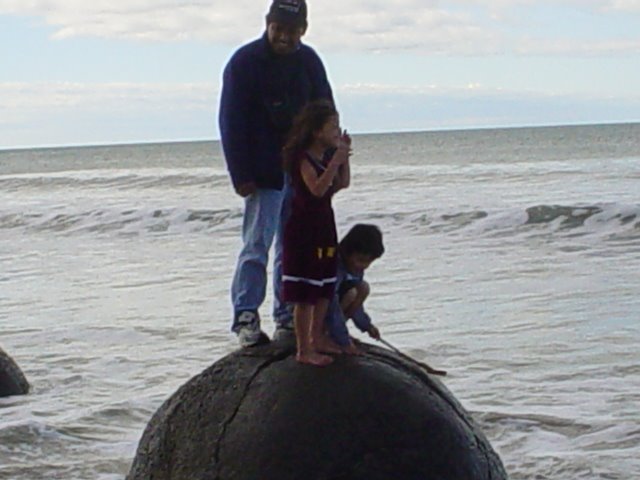Putrajaya in Malaysiakini letter

Masjidil Haram, Mecca
Masjid Nabawi, Madinah
Masjid Al-Aqsa, Jerusalem
The Masjid at Putrajaya
I do not know what inspire Z Ibrahim to write this piece in Malaysiakini, probably the 'bocor' roof and the return to wilderness of Putrajaya. What is Putrajaya being used now? The palace of the PM? And the PM office?
The Parliament is still in KL, so are everything else.
During the construction of Putrajaya in mid 90's, a lot of resources were sucked up, resulting in higher inflation and shortage of thing, construction materials included. Remember the shortage of water back in 97 and 98? That was to fill the Putrajaya Lake. Imagine some people had to go without water so that the lake be filled.
Not only that, the construction suck up a lot of money such that the nation's coffers were drained, leaving us vulnerable to the subsequent event - the financial crisis of 97, and the recession thereafter.
On the hindsight, we didnt have to go through that difficult time, if only we were more prudent in our spending, instead of spending big on white elephant projects.
And now at the age of internet, centralization of administration is a thing of the past, leaving the government distant from the populace. That is to say when government is unreachable by the common people, that will plant the seeds of discontent among the populace.
In the West, the governments are trying hard to be close to their people. Government departments are decentralised, main office no longer located in the capital, but in the provincial towns where rent and housing is cheaper and quality of living for govt workers are much better than big cities. Communication between offices is not a major problem with internet and good courier service.
Indeed, Putrajaya could be a 'white elephant' city. So what are we going to do about it? Shall we let it reclaimed by the forest and the wildlife bit by bit? I reckon Putrajaya must earns its own existence, it must be more that the city of PM residence.
I have never been to Putrajaya, ever. But I remember talking to a villager some years back who enthused about the beautiful buildings, nice architecture and the mosque that look like Masjid Nabi in Madinah,worth visiting, he said. (Please dont say that the Govt has built the next holy mosque, number 4 after Masjid Aqsa and we shall make pilgrimage to Masjid Putrajaya)
All I am saying is that Putrajaya must earn its existence, even as a tourist destination. Indeed we can make it a tourist destination, if we built more infrastructure like transportation system, tourist facilities etc.
Putrajaya – Mahathir’s Fatehpur Sikri
Z IbrahimJun 8, 07 3:22pm
I refer to the various reports regarding the various construction defects of buildings in Malaysia’s new administrative capital of Putrajaya. Putrajaya remains an architectural wonder in the forest with its gleaming, sometimes partially-completed buildings and bridges. A mega-project during Malaysia’s days of excesses, it is reminiscent of the great Mogul emperor’s Akbar’s deserted capital of Fatehpur Sikri.
Fatehpur Sikri, located 40km west of Agra, was the political capital of India's Mogul Empire under Akbar's reign from 1571 until 1585 AD. It shared its imperial duties as a capital city with Agra and is regarded as Emperor Akbar's crowning architectural legacy. Construction of the new ceremonial capital, with its elaborate palaces, formal courtyards, reflecting pools, harems, tombs and a great mosque commenced in 1571.
A large number of masons and stone carvers worked hard for15 years on the construction of the city the size of which was larger than contemporary London. It served as the capital of his mighty empire for twelve years (1571-1585) and was abruptly abandoned shortly after the work was completed ostensibly because of the lack of adequate water supply.
Akbar did not stay in this magnificent city for long and reasons for deserting Fatehpur Sikri are as much a mystery as was its construction. There is much speculation as to the reason Akbar built the city at the chosen site by the Sikri Ridge. Some historians cite he built it to honor the Sufi saint Sheikh Salim Chishti who used to dwell there and blessed the childless Akbar with three children including his heir Jahangir.
But its site could have been chosen more for its strategic location which lies on the highway between North and South India, and was of tactical value to control the huge Mogul Empire. The opulence of the city is greatly enhanced by the mosque which was the first structure to be built in the whole complex. The spacious courtyard added charm and could accommodate ten thousand men at prayer. Akbar is reputed to have been so inspired by the atmosphere that he wept and gave a call for prayer or the ‘azan’ himself.
Putrajaya, first envisioned in the 1980’s and founded officially on Oct 19, 1995 was built to accommodate and centralise all of the Malaysian government’s administrative duties and is located 30km south of Kuala Lumpur. The federal government paid a substantial amount of money to Selangor for the more than 11,000 acres of land to build this planned city possibly financed by Malaysia’s oil revenue which in retrospect could have been better utilised for education and health.
However after the 1997 economic crisis and following Mahathir’s resignation as prime minister of Malaysia, Putrajaya appears to many visitors as a forlornly desolate city. One of the key reasons for its apparent barrenness is the absence of public transport from Kuala Lumpur’s cosmopolitan population of over three million.
The city’s planners built highways but possibly due to economic reasons failed to put in place an efficient LRT connecting it to the masses in KL before or while the city was being built. Unlike Singapore which plans and builds MRT lines and stations decades ahead of actual development, Putrajaya’s planners blundered by building the city first and worrying about public transport later.
This error could prove fatal as Putrajaya stands eerily silent as the world passes by. Planners didn’t envision the fact that the usage of cars, the prices of which were already beyond the per capita income of the average Malaysian, were further handicapped by rising costs of petrol, maintenance and tolls ensuring the reduction of private transport utilisation.
Putrajaya, as in Fatehpur Sikri, lies in danger of being entrapped in the words of Lane Poole (a historian): ‘Nothing sadder or more beautiful exists in India than this deserted city, the silent witness of a vanished dream’.







3 comments:
nooryahaya, your letter on putrayaja in malaysiakini is very amateurish at best. u wrote that putrajaya sucked up all our water thats why we had a water crisis?? didn't u rememeber about the very terrible dry season which occured at that time?.. and putrayajaya caused the asian financial crisis?? wtf??!!
Putrajaya should have a mausoleum for people like TDK so that his achievements can be recognised after his death. If that is too expensive perhaps a great big tomb with his statue on top. What do you say?
that's not the picture of Al-Aqsa mosque. This is due to propaganda of zionis laknatullah! Dont got cheated! This is real picture of Al-Aqsa mosque http://winfighter.wordpress.com/2008/06/21/apa-anda-tahu-masjid-al-aqsa/
http://en.wikipedia.org/wiki/Al-Aqsa_Mosque
Post a Comment